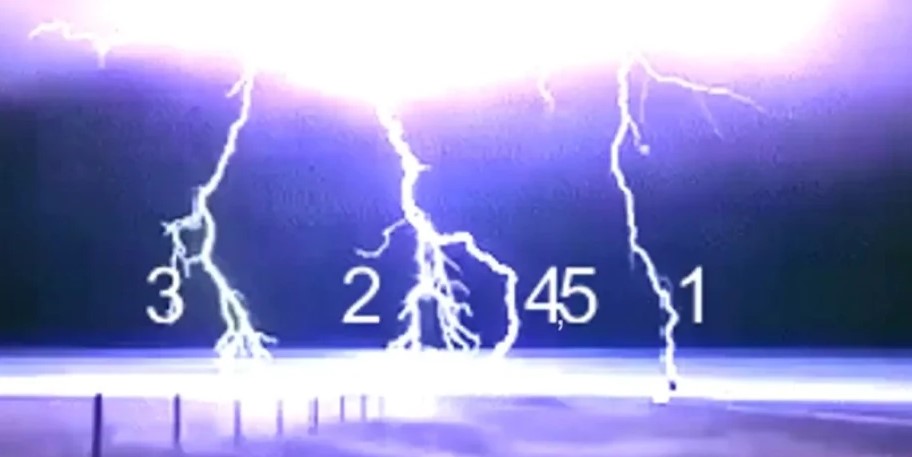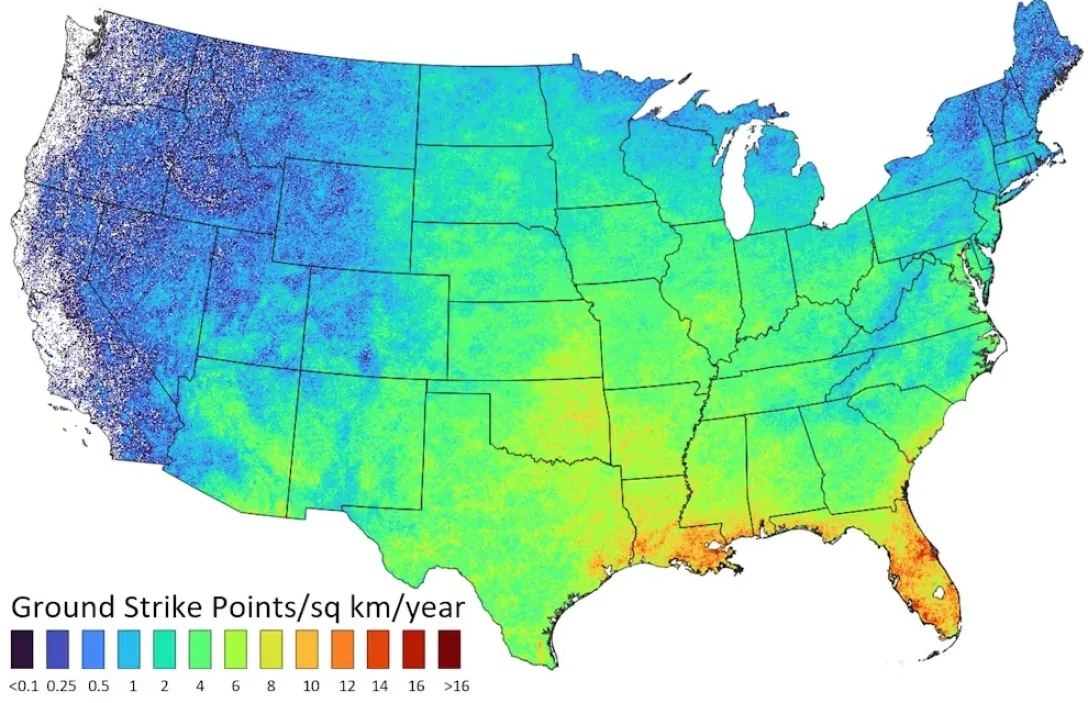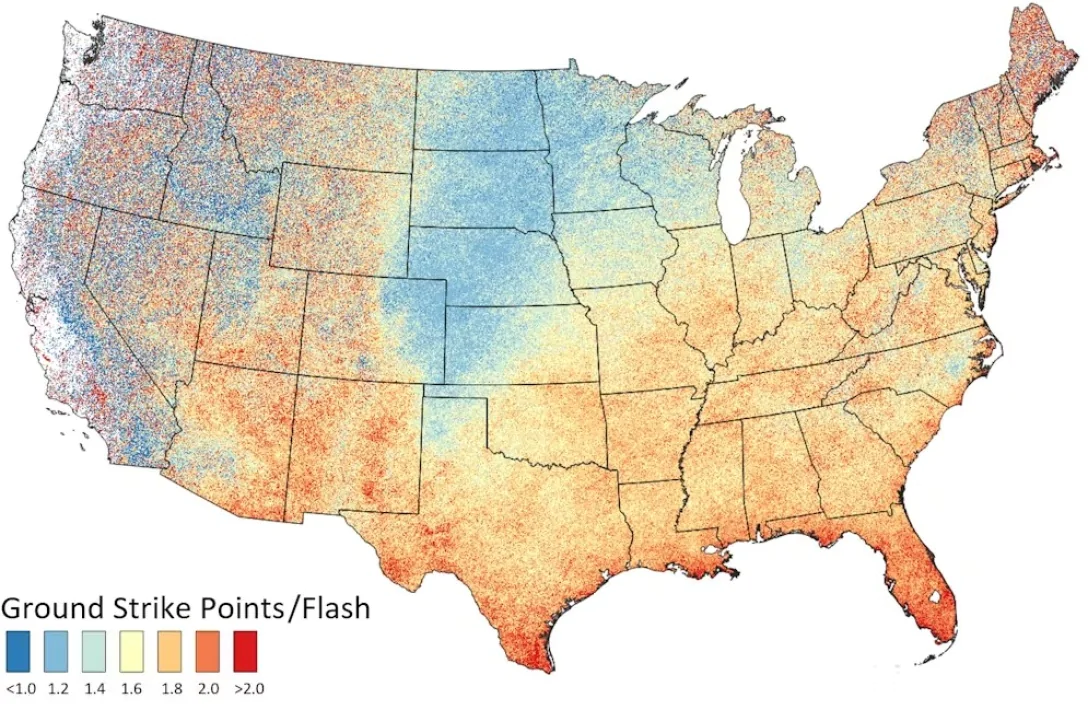
The researchers were able to name the most dangerous places during a thunderstorm where lightning strikes most often.
Lightning sparkles during thunderstorms at least 60 times per second all over the planet, and sometimes they can be found even near the North Pole. Each giant spark of electricity travels through the atmosphere at a speed of more than 320,000 km/h, at the same time it is hotter than the surface of the Sun and generates thousands of times more electricity than the outlet from which we charge our gadgets. All this together makes lightning extremely dangerous, Science Alert writes.
Every year, lightning injures and kills about 250,000 people worldwide, most often in developed countries where many people work outside with no shelter during thunderstorms. Statistics show that in the United States, from 2003 to 2023, an average of about 28 people died annually from lightning strikes.
However, estimates of lightning strikes in the United States vary widely: from 15 million per year, as claimed by a number of meteorologists since the 1990s, to 40 million per year, according to the Centers for Disease Control and Prevention. Unfortunately, all of this confusion complicates efforts to provide protection from deadly lightning strikes.
In a new study, University of Wisconsin-Madison meteorologist Chris Wagaski and colleagues used data from the National Lightning Detection Network in the United States over the past 6 years. The team believes that this data has become accurate enough in recent years to improve forecasts, prevent damage, and map the most dangerous places where deadly lightning strikes.
What is lightning?
A lightning flash is a cloud-to-ground lightning bolt that occurs within 1 second and within a radius of 9.6 kilometers. Each lightning flicker represents a lightning strike and can strike one or more points on the ground. At the same time, there can be several beats in the same channel at once.
At the same time, lightning itself is an electrical discharge that tries to dissipate electricity in the cloud, and therefore, if a large amount of electricity has accumulated, many lightning bolts can occur.
Data from the National Lightning Detection Network for 6 years shows that on average, 23.4 million flashes, 55.5 million strikes and 36.8 million points of impact on the ground occur annually in the United States.

Photo: Chris Vagasky
Where lightning strikes most often
The main ingredients of a thunderstorm are warm and humid air near the ground, cooler and drier air above it, and a way to lift the warm, humid air. In fact, wherever these ingredients are present, lightning can occur.
Statistics show that this most often occurs near the Gulf of Mexico coast, where sea breezes contribute to thunderstorms on most summer days. According to Wagaska, the hottest spot for cloud-to-ground lightning strikes is Florida, with 120,000 lightning strikes in one area of Florida alone in 2023.
At the same time, the central and southern parts of the United States are not as prone to lightning, but there are usually more thunderstorms and lightning strikes there than in the north and west of the country. At the same time, data suggests that lightning in the western United States can be particularly destructive and cause forest fires. Meanwhile, the cool waters of the Pacific Ocean tend to lead to a small number of thunderstorms along the west coast.

Photo: Chris Vagasky
How to count lightning
To calculate how much lightning falls to the ground and where it happens, scientists need to be able to detect it. The National Lightning Detection Network, for example, uses strategically placed antennas to listen to radio waves created by lightning – technology has evolved to the point where scientists can now detect at least 97% of lightning.
However, the number of lightning strikes varies from year to year, depending on weather conditions in the spring and summer months, when lightning is most frequent. Wagaski notes that despite the fact that scientists have learned how to detect lightning, it is still extremely unpredictable, and therefore more research will be needed to better understand its nature.

